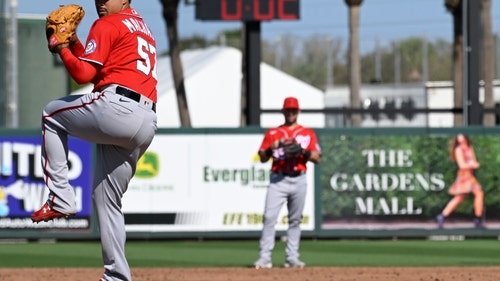
The Pittsburgh Pirates Should Move On From Chris Stewart

The Pittsburgh Pirates have their positional players pretty much set for next season, with the exception of a backup shortstop, as 12 players are currently under contract with the club. However, there is one spot in which they should make a move, even though the player has a guaranteed contract for next season.
The Pirates acquired Chris Stewart on December 2, 2013 from the New York Yankees for a player to be named later (Kyle Haynes). That makes today Stewart’s 1064th day as a member of the Pittsburgh Pirates. A veteran backup catcher lasting three years seems like a lifetime, especially for Pirates fans. There have been 19 different catchers to have 50 plate appearances for the Pirates since 2000 and 29 players to catch an inning for the club in that time. The 2016 Pirates featured six different catchers and the 2011 club had 11. Injuries to catchers and burning through multiple catchers has been a problem. So three years for a backup in Pittsburgh seems about correct in terms of length.
Chris Stewart hit .294/.362/.331 with a 100 wRC+ in 49 games and 154 plate appearances in 2014, his first year with the Pirates. He followed that up with a .289/.320/.340, 84 wRC+ in 58 games and 172 plate appearances with the club in 2015. The first two years as a Pirate Stewart did well, as that is a collective .292/.340/.336 and a 92 wRC+ in 326 plate appearances. He was eight percent below league average in those two years combined, but for a backup catcher that is solid behind the dish, it’s useable, as he would not pinch hit in high leverage situations unless needed.
More from Rum Bunter
Stewart’s success was a lot of luck, coming in the form of a .364 batting average on balls in play (BAbip) and .348 BAbip in 2014 and 2015, combined for a .355 BAbip. That is extremely high for a slow catcher, and one who had a 25.1 percent soft contact rate in those two years combined, ranking 11th worst of the 391 players to have at least 300 plate appearances. His luck wore off in the 2016 season, hitting just .214/.319/.286 with a 68 wRC+, which was still nine percent better than his 2006-2013 number of 58. It mirrored his 2016 ZiPS projection of a 70 wRC+ and his Steamer projection of 71. His bat isn’t very good at all.
Chris Stewart’s offense in 2016 didn’t just revert back to where his talent really is, his defense got worse. Using stat corner, and from his time as actually playing (2011-2016), his pitch framing is as followed:
His pitch framing for the first time cost his pitchers strikes, and the amount he has gotten per game has decreased each year. His defensive runs saved (DRS) was also a career low of -3 in 2016.
The Pirates have an internal option that can replace Stewart in Elias Diaz. Diaz missed time in 2016 with elbow surgery, and he was also shut down for the year in early September with a leg infection. He is soon to be 26 years old, and his time of becoming useful for the Pirates in terms of playing or trade is dwindling. After Francisco Cervelli signed an extension at the start of the 2016 season, Diaz’s long-term outlook with the Pirates is a backup catcher, assuming he isn’t dealt, but even then, what piece would a 26-year-old rookie catcher net?
Diaz’s bat, similar to Stewart, does not provide much value. But Diaz’s calling card is his strong defense, which includes his cannon of arm. Diaz could slot right in Stewart’s spot, provide equal, if not better, offense, and provide better defense behind the dish. He would also cost league minimum, or about one-third of what Stewart currently makes.
Chris Stewart signed a deal with the Pirates last off-season, one that paid him $1.35 million in 2016, and one that will pay him $1.4 million in 2017, and has an option worth $1.5 million in 2018 ($250,000 buyout). Unloading his contract won’t be an issue, as a veteran catcher that can back up a starter making next to nothing can be enticing for teams, hello Tampa Bay. The return for Stewart would not be high, but it would give the Pirates about $900,000 of extra cash to spend. How much does $900,000 really matter? Turns out a lot, according to Peter Gammons, the Pirates just missed out on Rich Hill:
The Red Sox wanted him back, but as a reliever. Several teams inquired, and when the Pirates offered $6M and the opportunity to start, Oakland jumped in AT $6.5 and Hill signed
To ensure that does not occur again in 2017 with a different player, the Pirates should cut ties with Chris Stewart and replace him with Elias Diaz, who at the absolute worst, can provide equal value for a fraction of the cost.
*Numbers from fangraphs and baseball-reference
This article originally appeared on




